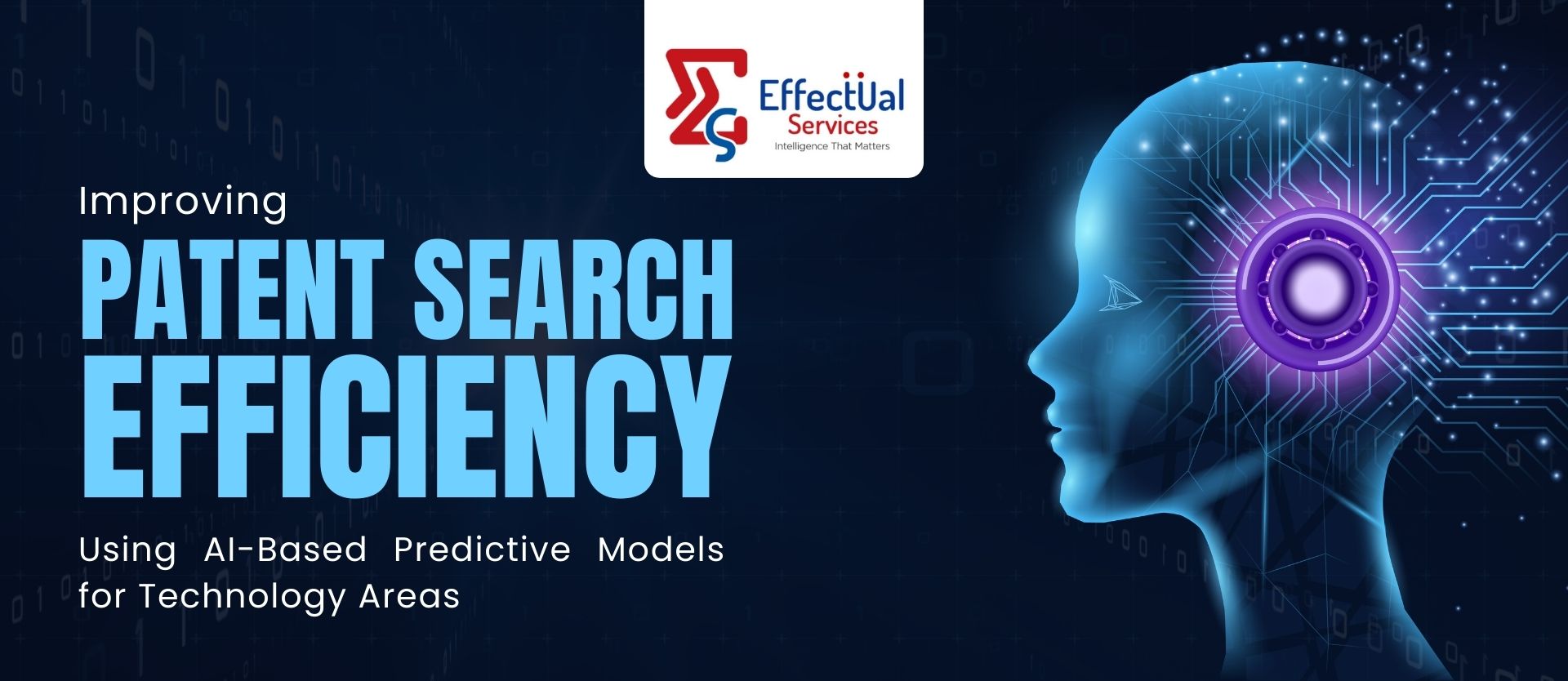Improving Patent Search Efficiency Using AI-Based Predictive Models for Technology Areas

Introduction
AI tools are backed by extensive collections of Patent data making it a very powerful tool for searching relevant prior art. These tools can scan into multiple documents from global patent databases, academic journals and different publications. By integrating technologies such as Natural Language Processing (NLP) and Machine Learning (ML), AI can detect similar prior art by analyzing input context and significantly improving patent search efficiency compared to traditional methods.
Also AI-powered tools can look into vast network of patent families and citation to give a brief about industry and technology trends. This insight give valuable feedback to businesses helping them to make informative decisions.
Challenges Faced Earlier
Before the advancement of these AI-powered tools, manual screening of patent was prone to error and was time consuming. Keywords-based search often leads to identifying wrong context and produces irrelevant and inaccurate results. By using these methods, most of the closest prior art goes overlooked. Searching patents across multiple jurisdictions (e.g., USPTO, EPO, WIPO) was complicated.
Overview
The term Artificial Intelligence (AI) suggests advanced thinking which has never been imagined previously. Searching for relevant information in the growing volume of patent data and analyzing prior arts is a difficult task to perform manually. AI can improve the efficiency of patent searching and assist in saving invaluable time, costs and efforts. The efficiency of AI is incomparable to other methods while performing patent searches because of the high accuracy and quality offered in a short period of time. The automation of searching huge volumes of information by using Deep Learning (DL) and Neural Networks (NN) is accompanied by learning from previously analyzed data, which helps improve the accuracy of overall searches. Each searcher has multiple tools available for use, and each of them has unique features that make these tools distinct. In some tools, results are ranked based on the level of contextual similarity, in addition to being provided based on AI similarity algorithms. Some tools enable more advanced citations analysis, and some permit the search of similar patents in the context of more than one target patent when the analysis requires the concept being identified in a single prior art.
Related Resource: Why AI is crucial for Patent Searching and Mining
Advantages
- Faster Search Results
- Enhances Accuracy
- Comprehensive Coverage
- Semantic Understanding
- Trend Analysis and Forecasting
- Cost-Effectiveness
- Real-Time Updates
- Reduction in Human Error
- Enhanced Patent Landscape Visualization
- Improved Competitive Intelligence and Efficient Patent Family Analysis
Conclusion
AI-powered tools have revolutionized the patent search process, addressing the limitations of traditional methods by offering faster, more accurate, and comprehensive results. Leveraging advanced technologies such as NLP and machine learning, enable precise prior art detection, trend forecasting, and semantic understanding of patent content. By reducing manual effort, minimizing errors, and providing real-time updates, AI enhances the efficiency and effectiveness of patent searches, empowering organizations to make informed decisions and stay ahead in the competitive innovation landscape.
Solutions Driving Innovation & Intelligence
Enabling Fortune 500's, R&D Giants, Law firms, Universities, Research institutes & SME's Around The Globe Gather Intelligence That
Protects and Nurtures Innovation Through a Team of 250+ Techno Legal Professionals.

